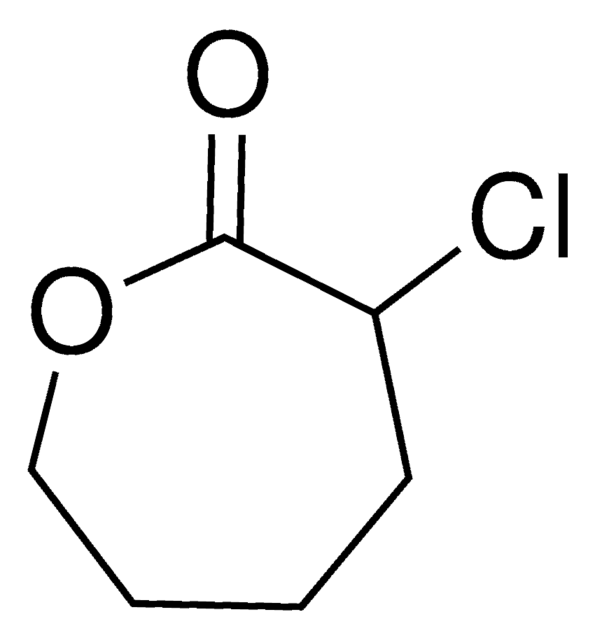SMB00971
4-Ethylphenol sodium sulfate
Sinonimo/i:
4-Ethylphenyl sulfate sodium salt
Autenticatiper visualizzare i prezzi riservati alla tua organizzazione & contrattuali
About This Item
Formula empirica (notazione di Hill):
C8H9NaO4S
Peso molecolare:
224.21
NACRES:
NA.77
Prodotti consigliati
Descrizione generale
4-Ethylphenol sodium sulfate is the sodium salt of 4-Ethylphenyl sulfate (4EPS). 4-Ethylphenyl sulfate is a gut microbial metabolite derived from tyrosine, which is converted into 4-ethylphenol and subsequently sulfated in the liver. Upregulated urine 4EPS levels are found among rats prone to insulin resistance and obesity. Increased plasma 4EPS was reported in a murine model of autism, and mice treated with 4EPS displayed anxiety-like behaviours. Higher levels of 4-ethylphenylsulfate were also found in plasma, liver, heart and kidneys in a rat model of chronic kidney disease. 4EPS is a component of the urine of male rats, and both 4-ethylphenyl sulfate and 4-ethylphenol are thought to participate in pheromonal communication. p-Cresol-sulfate and 4-ethylphenyl sulfate are thought to derive from tyrosine and have similar bioactivities, however their enzymatic production may differ.
Applicazioni
Metabolomics research
Microbiome research
Microbiome research
Altre note
For additional information on our range of Biochemicals, please complete this form.
Codice della classe di stoccaggio
11 - Combustible Solids
Classe di pericolosità dell'acqua (WGK)
WGK 3
Punto d’infiammabilità (°F)
Not applicable
Punto d’infiammabilità (°C)
Not applicable
Choose from one of the most recent versions:
Certificati d'analisi (COA)
Lot/Batch Number
Don't see the Right Version?
If you require a particular version, you can look up a specific certificate by the Lot or Batch number.
Possiedi già questo prodotto?
I documenti relativi ai prodotti acquistati recentemente sono disponibili nell’Archivio dei documenti.
Alexandra Lafaye et al.
Journal of mass spectrometry : JMS, 39(6), 655-664 (2004-07-06)
This paper reports a liquid chromatographic/electrospray ionization mass spectrometric (LC/ESI-MS) method for profiling a wide range of structurally different sulfoconjugated compounds in urine and its application to the characterization of biomarkers for heavy metal toxicity in rat urine. Sulfoconjugates were
Thomas J Velenosi et al.
Scientific reports, 6, 22526-22526 (2016-03-05)
Chronic kidney disease (CKD) results in the accumulation of metabolic waste products that are normally cleared by the kidney, known as uremia. Many of these waste products are from bacteria metabolites in the gut. Accumulation of uremic toxins in plasma
Lauren J Rajakovich et al.
Natural product reports, 36(4), 593-625 (2018-11-20)
Covering: up to the end of 2017 The human body is composed of an equal number of human and microbial cells. While the microbial community inhabiting the human gastrointestinal tract plays an essential role in host health, these organisms have
S Achiraman et al.
Journal of biosciences, 27(7), 679-686 (2003-02-07)
The present study was carried out to investigate the chemical nature of the urine of male mice and to assess its bioactivity. Urine of mature male mice was extracted with dichloromethane (1 : 1 ratio v/v) and analysed by gas-chromatography
Houkai Li et al.
Journal of proteome research, 6(4), 1364-1370 (2007-02-22)
In conventional pharmacological studies, intersubject differences within an animal strain are normally neglected, leading to variations in pharmacological outcomes in response to the same stimulus. Using two classical experimental models, the Streptozotocin (STZ)-induced diabetic model of Wistar rats and the
Il team dei nostri ricercatori vanta grande esperienza in tutte le aree della ricerca quali Life Science, scienza dei materiali, sintesi chimica, cromatografia, discipline analitiche, ecc..
Contatta l'Assistenza Tecnica.








